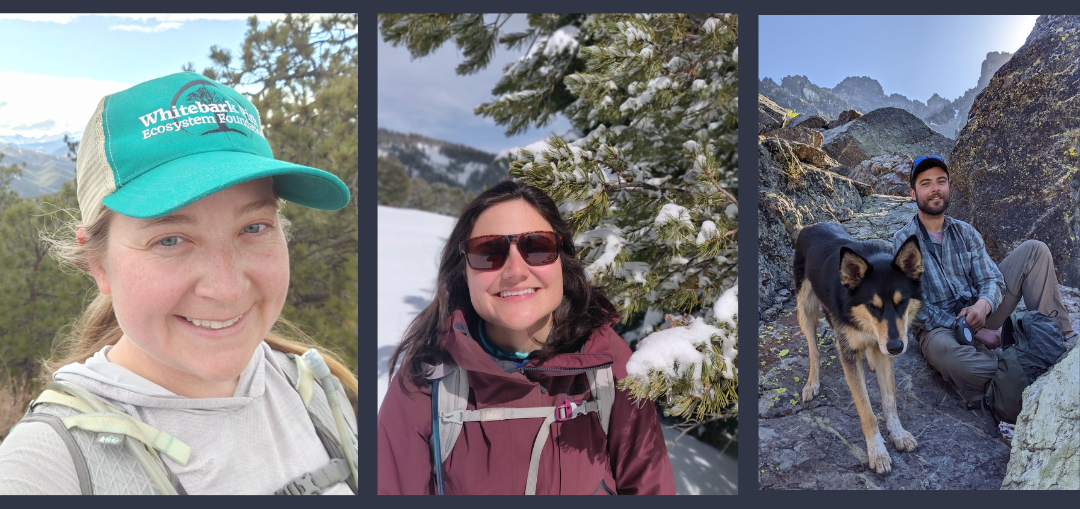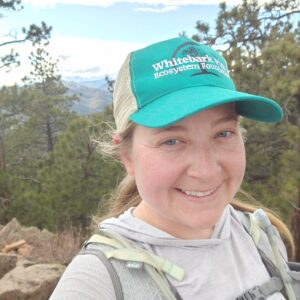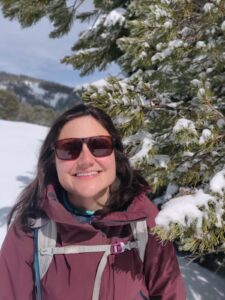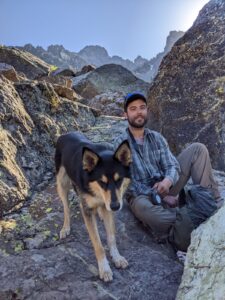
Student Spotlight: 2022–2023 Webinar Series Team
The Whitebark Pine Ecosystem Foundation’s “High-Elevation, Five-Needle White Pines: Science and Management Webinar Series” shares scientific findings and management information on these tree species in the U.S. and Canada, while fostering communications among scientists and land managers. This year’s talks have covered a range of topics on high-five pines, including genetic resistance to white pine blister rust, restoration projects and treatments, and using advanced technologies to improve monitoring methods. The webinar series is coordinated by WPEF Board Members Cara Nelson and Danielle Ulrich and a dedicated team of graduate student researchers. For Graduate-Professional Student Appreciation Week, we reached out to each of the team members to learn more about their research, career goals and pastimes. We sincerely thank Laurel, Teo and Vlad for another amazing year of informative talks! You can watch all recordings on our YouTube channel.

Laurel Sindewald
Laurel Sindewald is a PhD candidate in Diana Tomback’s Forest Ecology Lab at the University of Colorado Denver. She is completing several research projects on limber pine at treeline in Rocky Mountain National Park. In her first paper, she described the structure and composition of treeline communities where limber pine is the dominant conifer and is working on a follow-up study to compare randomly selected communities in the park. She also is estimating limber pine seed viability across a high-elevation gradient and has received funding from the park to grow resulting seedlings for restoration work in the Cameron Peak Fire burn area. Lastly, she is developing remote-sensing applications for species classification at treeline, which she presented on during the WPEF Webinar Series this year. Laurel plans to defend her dissertation this fall and continue a career as a research scientist. She is interested in leveraging large ecosystem datasets (e.g., NEON, LTER) and using machine learning to monitor systems as climate changes and answer large-scale questions. In her spare time, Laurel enjoys trail running for science and fun. She recently signed up for the Bryce Canyon 50-mile Ultras with a charity bib to raise funds for WPEF. You can follow Laurel on Twitter and connect with her on LinkedIn.

Teo Rautu
Teo Rautu is a master’s student in the labs of Danielle Ulrich and Brian Smithers at Montana State University. She is studying how whitebark pine influences snowpack and streamflow in the Greater Yellowstone Ecosystem. Using a water model, she hopes to better understand how whitebark pine mortality and stand characteristics (i.e., health, density) may change downstream water availability. She also received a 2022 SITKA Gear Ecosystem Grant for this work. Throughout her research, Teo has been drawn to the dynamic interactions of complex hydrologic processes and the far-reaching impacts on the surrounding ecosystems. Teo plans to graduate this fall and pursue a career as a spatial analyst. She also values clearly communicating scientific findings to broad audiences and hopes to apply this skill set to future positions. Outside of work, Teo enjoys hiking, birding, playing board and video games, and traveling to new places. You can check out some of her work in this Park Science magazine article and connect with her on LinkedIn.

Vlad Kovalenko
Vlad Kovalenko is a master’s student in systems ecology at the University of Montana. His research focuses on how the decline of whitebark pine in Glacier National Park could affect the local population of Clark’s nutcracker. Specifically, h Vlad also works as a wildlife technician at Glacier National Park where he leads Vlad plans to complete his graduate degree this spring and pursue a research career or PhD program. You can listen to Season Two of the Headwaters podcast to learn more about his work in Glacier National Park (see Chapter Two) and connect with him on LinkedIn. He also presents his work during the WPEF Webinar Series on April 18.

